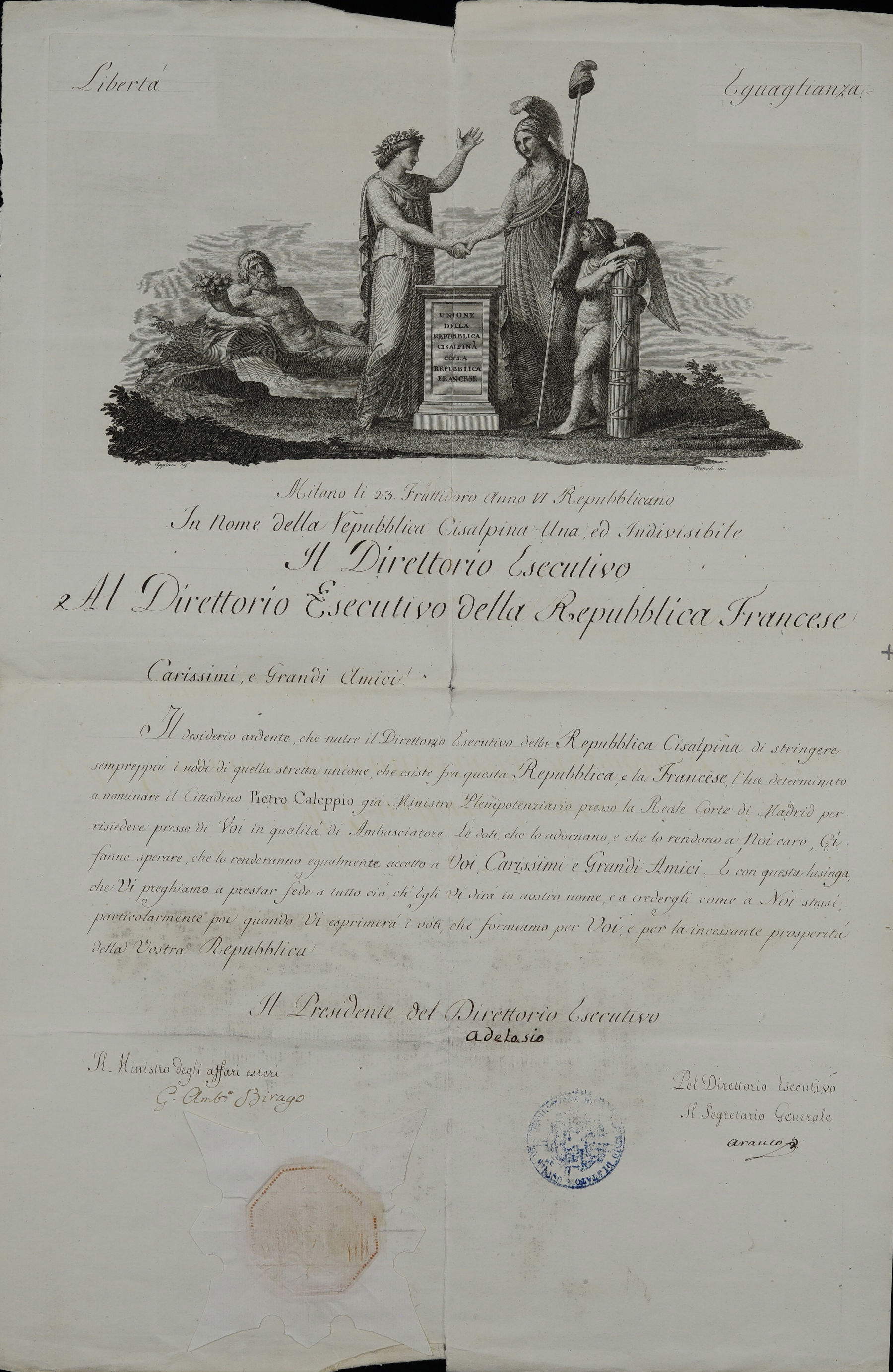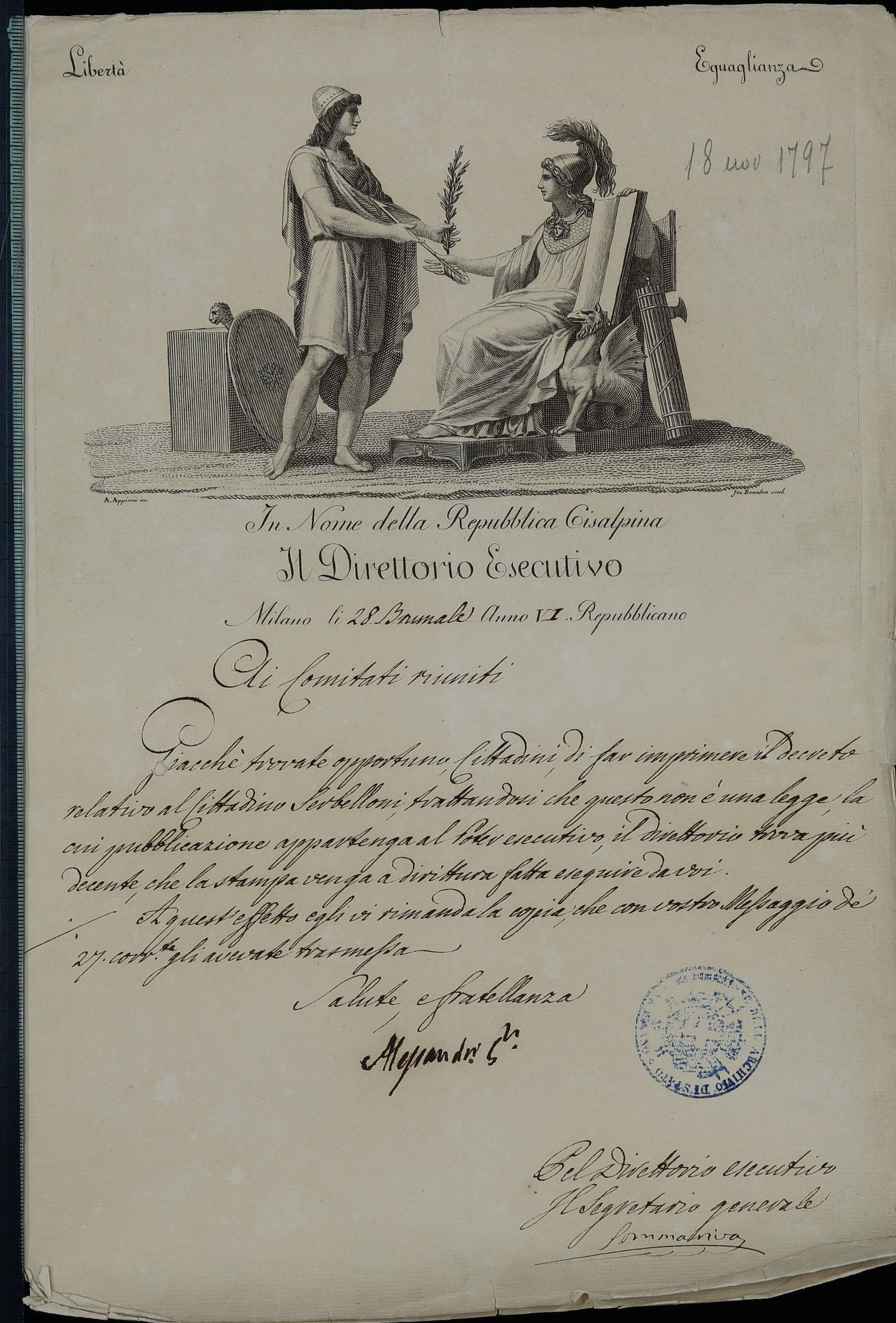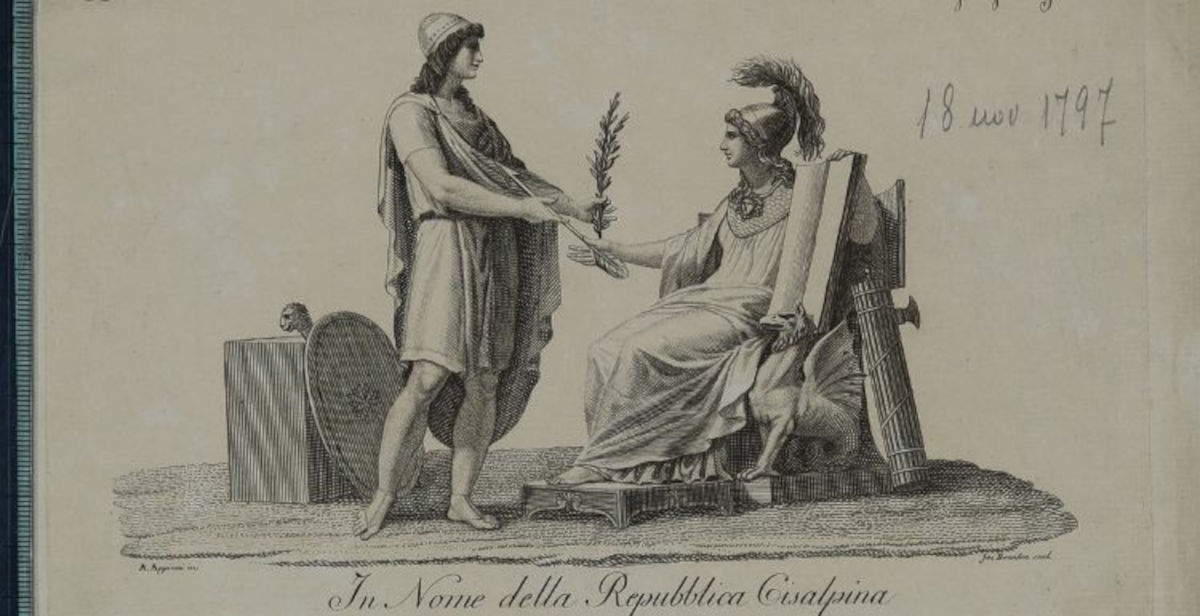A selection of original documents, many rarely accessible to the public, reconstructs the professional and private life of Andrea Appiani within the spaces of theMilan State Archives. On Tuesday, Nov. 18, 2025, from 6 to 9:30 p.m., the institute will open in the frescoed hall of the Senate Building the documentary exhibition Andrea Appiani. The Documents and Stationery of an Artist of Neoclassicism, which illuminates new aspects of the biography of the painter, a central figure of Milanese Neoclassicism and an artist directly linked to the Napoleonic season. The exhibition, which can be visited until Jan. 11, 2026, and is curated by Stefano Leardi, director of the Milan State Archives, Camila Amoros, an official of the institute, and Simone Ferraro, an independent researcher, runs in parallel with the Palazzo Reale Appiani exhibition. Neoclassicism in Milan, but focuses attention on the evidence preserved in the Archives’ repositories, focusing on the administrative, political and personal dimensions that characterized the painter’s career.
The selected material includes well-known documents and others less explored, including the artist’s unpublished will and the draft of the decree by which Napoleon, in 1805, appointed him First Court Painter. The document bears the emperor’s autograph signature and testifies to the role Appiani played in defining the regime’s official image within the Kingdom of Italy. The exhibition also offers the opportunity to take a close look at examples of the famous letterheads designed by Appiani for bureaucratic offices: sheets decorated with allegories and political symbols that pursued a declared propagandistic intent and tell the story of the visual construction of the Napoleonic apparatus.
![Minute of imperial decree for the appointment of Cav. Appiani as First Painter to the King. The document has an autograph signature by Napoleon. 8 primial an 13 [républicain] - [1805, June 7](ASMi, Autographs, b. 103, f. 1)](https://cdn.finestresullarte.info/rivista/immagini/2025/fn/appiani-minuta-decreto-nomina-napoleone.jpg)


The exhibition is divided into three sections. The first traces the artist’s biography through documents covering the entire span of his life, from his baptismal certificate to his will. The latter, drawn up in 1817, a few months before his death, returns the image of a painter tried by years of infirmity. In 1813 Appiani had suffered a stroke that forced him into a long period of immobility, drastically reducing his activity and affecting the family’s economic picture. Indeed, the final part of the section, entitled Appiani after Appiani, illustrates the difficulties faced by his heirs in a context marked by the collapse of the Napoleonic system and the return of the Austrians to Milan. Weakened financially, the family attempted to sell thirteen preparatory cartoons to the Brera Academy, almost all of them devoted to themes related to imperial propaganda. The operation was not crowned with the hoped-for success: it was not until 1857 that Emperor Franz Joseph purchased one of the cartoons, Parnassus (or Apollo and the Nine Muses), earmarking it as a personal gift.
The second section is devoted to the letterheads made during the years of the Cisalpine Republic, between 1796 and 1799. Here the itinerary compares the models produced by Appiani with other graphic proposals elaborated by artists active in the same period. The last section deals with the subject of Appiani’s position as Commissioner of Fine Arts, which he held during the years of the suppressions of religious bodies. The documentation illustrates how this role included the census and protection of artistic property from the suppressed institutions, as well as the selection of works destined to enrich the collections of the Academies of Milan and Bologna. The assignment required technical expertise and organizational skills, as interventions had to reconcile educational needs, and celebratory purposes. The opening will be held on Tuesday, November 18, at 6 p.m., with introductory remarks by the curators. The exhibition will remain open to the public until Jan. 11, 2026, Monday through Friday, 11 a.m. to 4 p.m., with free admission by reservation at as-mi.prenotazione@cultura.gov.it.
 |
| Unpublished documents and letterheads: Milan investigates Andrea Appiani's legacy |
Warning: the translation into English of the original Italian article was created using automatic tools. We undertake to review all articles, but we do not guarantee the total absence of inaccuracies in the translation due to the program. You can find the original by clicking on the ITA button. If you find any mistake,please contact us.